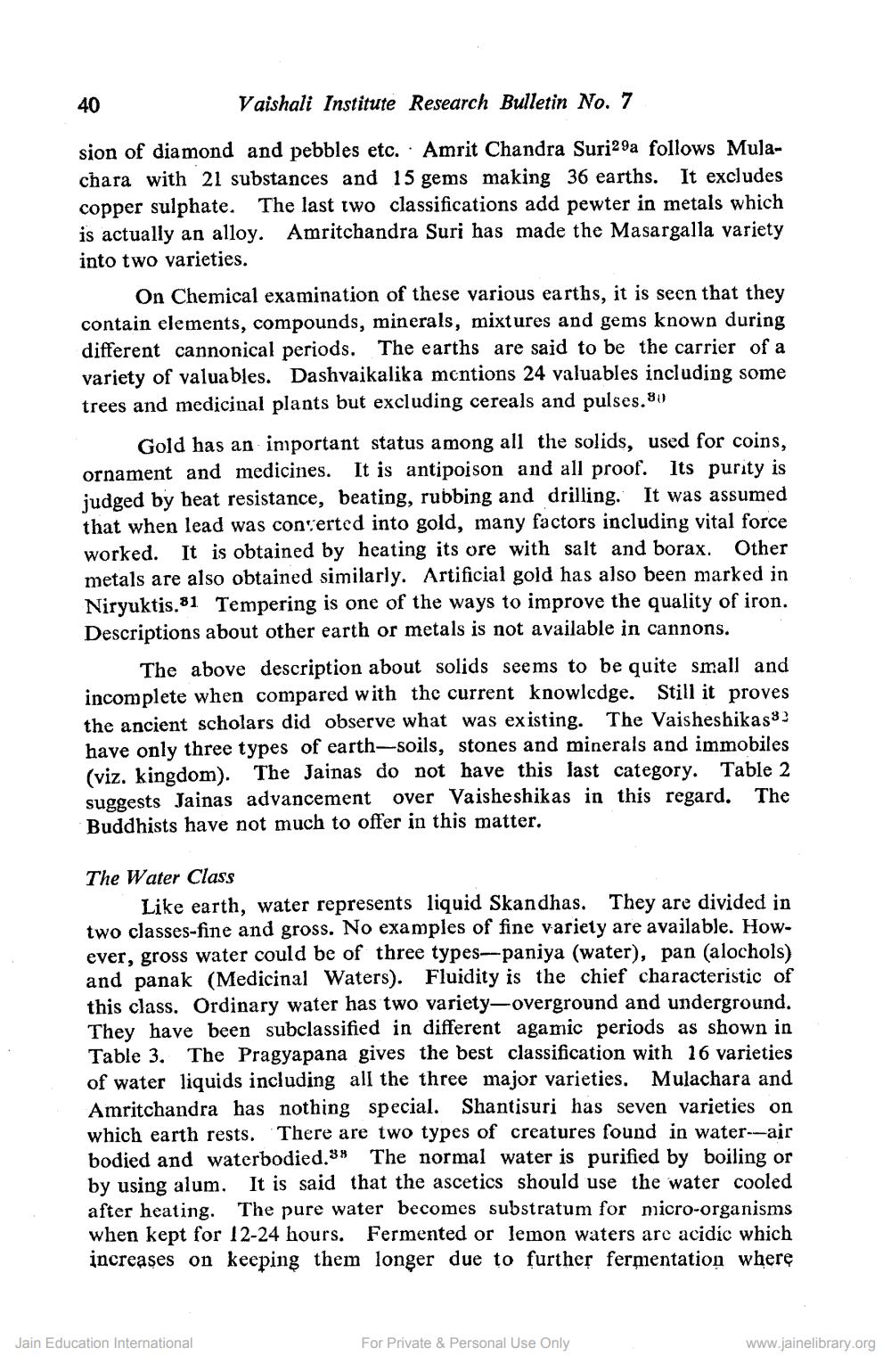________________
40
Vaishali Institute Research Bulletin No. 7
sion of diamond and pebbles etc. Amrit Chandra Suri29a follows Mulachara with 21 substances and 15 gems making 36 earths. It excludes copper sulphate. The last two classifications add pewter in metals which is actually an alloy. Amritchandra Suri has made the Masargalla variety into two varieties.
On Chemical examination of these various earths, it is seen that they contain elements, compounds, minerals, mixtures and gems known during different cannonical periods. The earths are said to be the carrier of a variety of valuables. Dashvaikalika mentions 24 valuables including some trees and medicinal plants but excluding cereals and pulses.80
Gold has an important status among all the solids, used for coins, ornament and medicines. It is antipoison and all proof. Its purity is judged by heat resistance, beating, rubbing and drilling. It was assumed that when lead was converted into gold, many factors including vital force worked. It is obtained by heating its ore with salt and borax. Other metals are also obtained similarly. Artificial gold has also been marked in Niryuktis.81 Tempering is one of the ways to improve the quality of iron. Descriptions about other earth or metals is not available in cannons.
The above description about solids seems to be quite small and incomplete when compared with the current knowledge. Still it proves the ancient scholars did observe what was existing. The Vaisheshikas32 have only three types of earth-soils, stones and minerals and immobiles (viz. kingdom). The Jainas do not have this last category. Table 2 suggests Jainas advancement over Vaisheshikas in this regard. The Buddhists have not much to offer in this matter.
The Water Class
Like earth, water represents liquid Skandhas. They are divided in two classes-fine and gross. No examples of fine variety are available. However, gross water could be of three types-paniya (water), pan (alochols) and panak (Medicinal Waters). Fluidity is the chief characteristic of this class. Ordinary water has two variety-overground and underground. They have been subclassified in different agamic periods as shown in Table 3. The Pragyapana gives the best classification with 16 varieties of water liquids including all the three major varieties. Mulachara and Amritchandra has nothing special. Shantisuri has seven varieties on which earth rests. There are two types of creatures found in water--air bodied and waterbodied. The normal water is purified by boiling or by using alum. It is said that the ascetics should use the water cooled after heating. The pure water becomes substratum for micro-organisms when kept for 12-24 hours. Fermented or lemon waters are acidic which increases on keeping them longer due to further fermentation where
Jain Education International
For Private & Personal Use Only
www.jainelibrary.org




